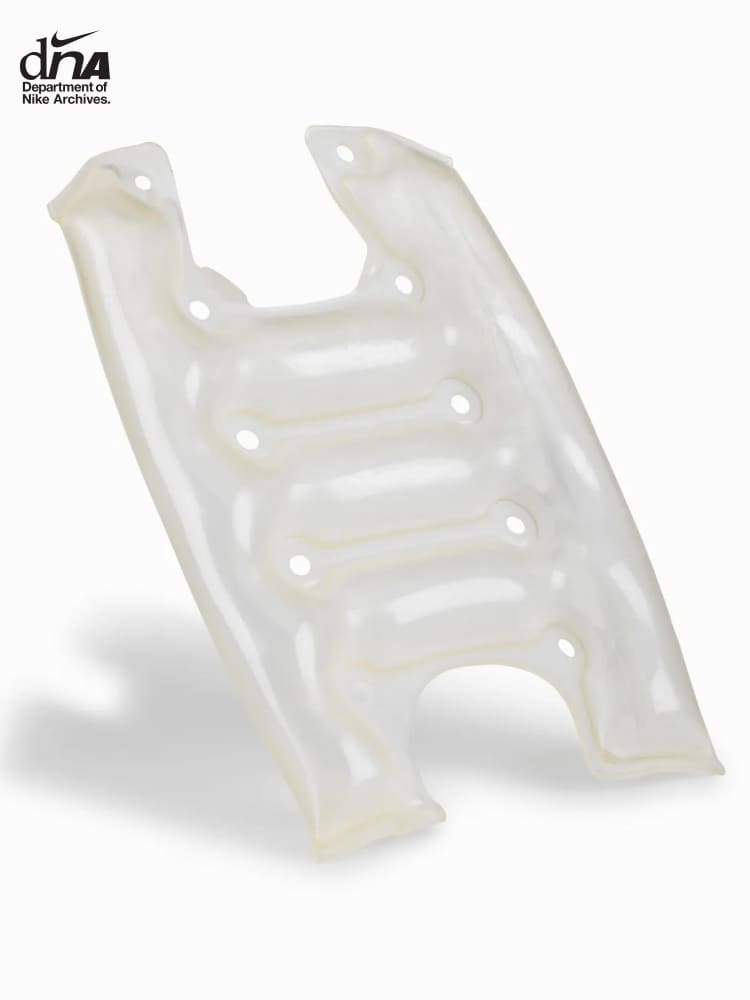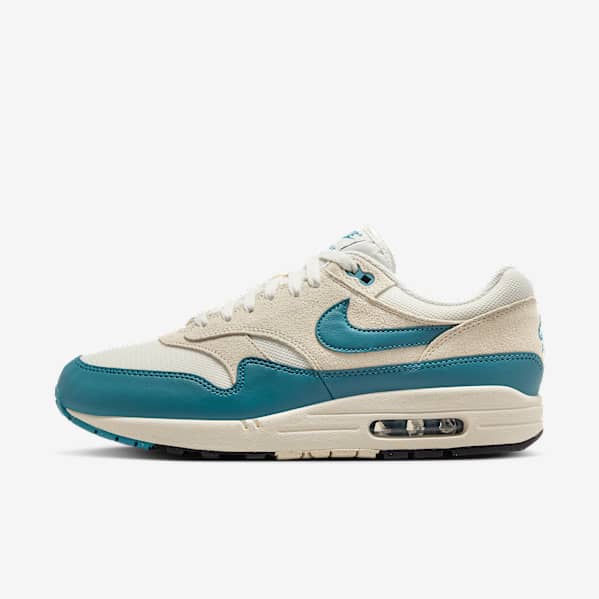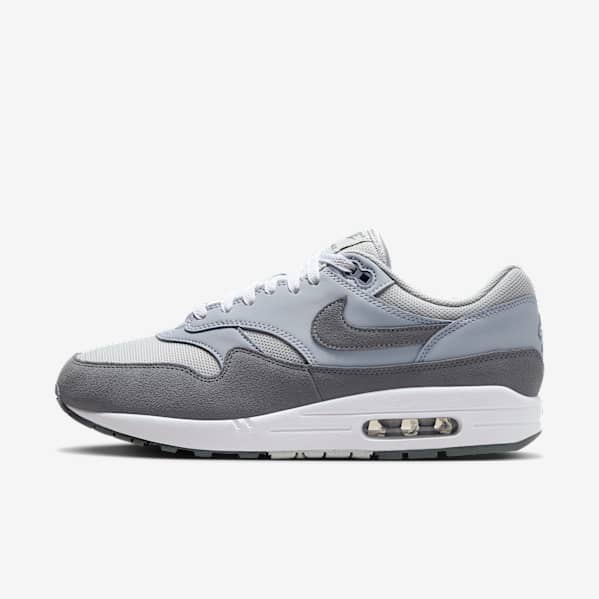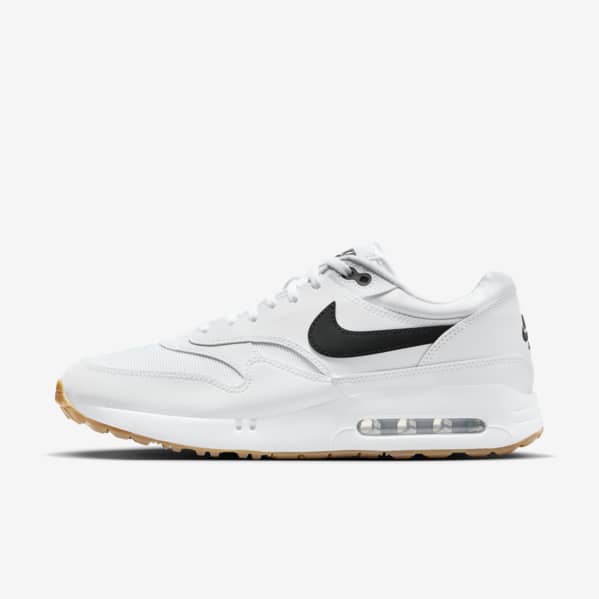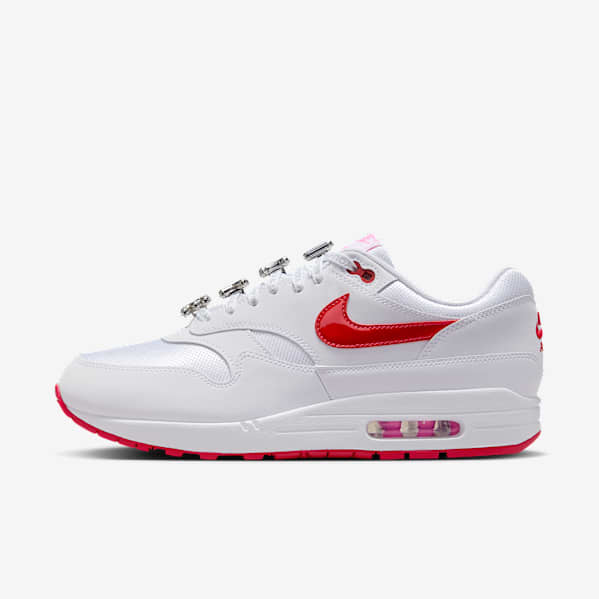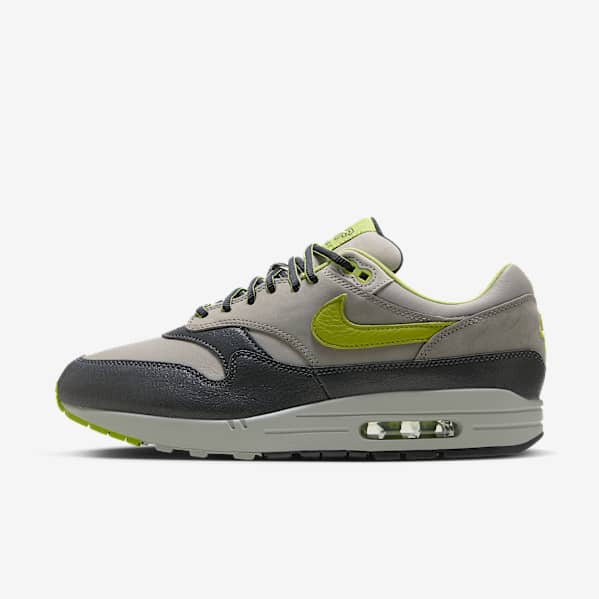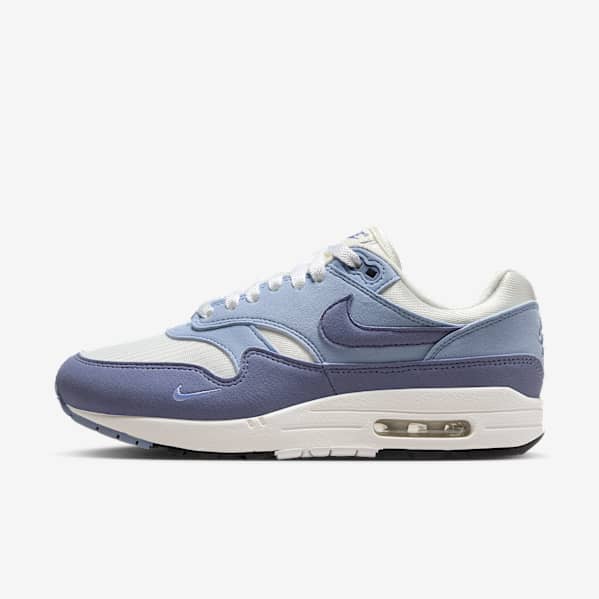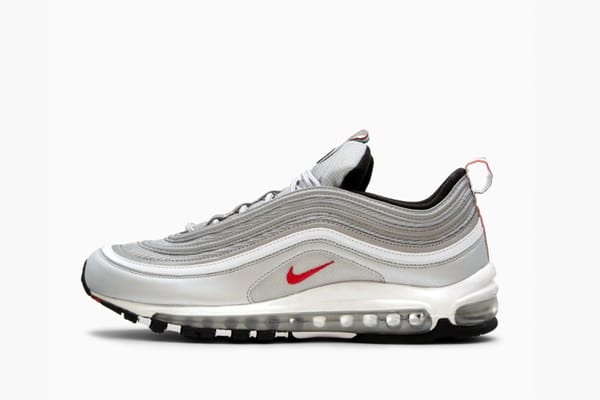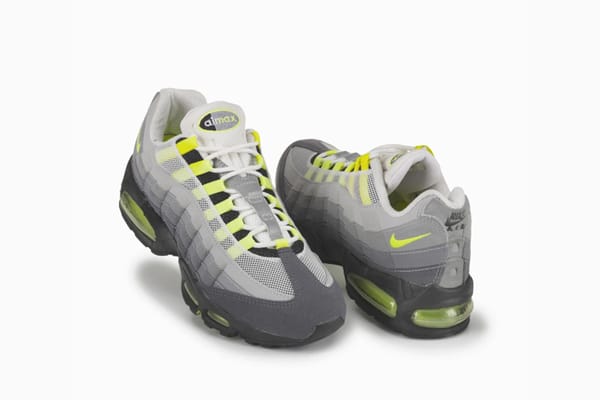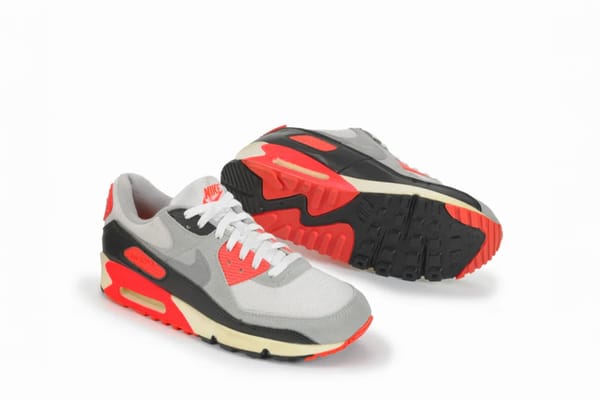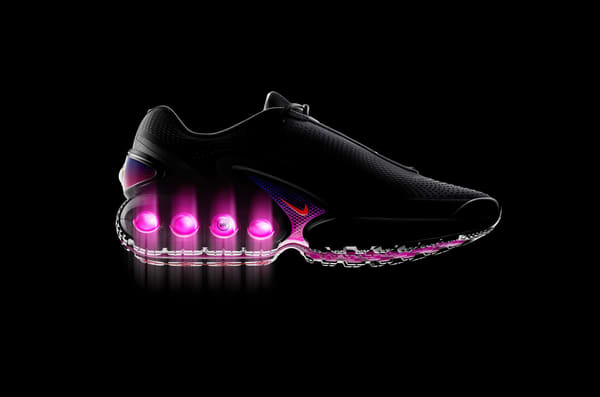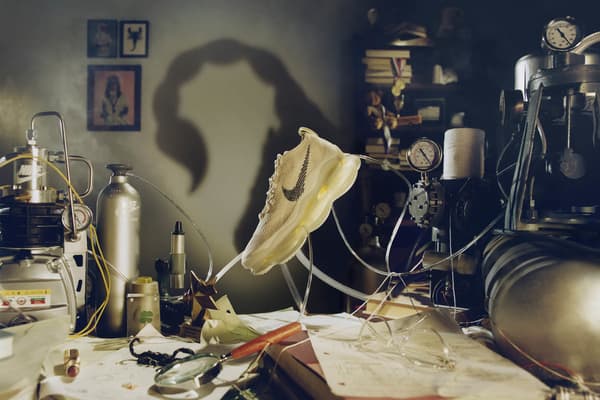The history of the Air Max 1
Department of Nike Archives
Discover the details behind one of the most iconic designs in Nike history.

With an architecture degree and years of being coached by Nike co-founder Bill Bowerman at the University of Oregon, Tinker Hatfield joined Nike in 1981. At first, his job was simple: design office spaces, showrooms and stores. He loved it, describing architecture as the perfect combination of art and science.
A few years later, Tinker was asked if he could start designing shoes. He was intrigued, thinking to himself, "This is where the real action is", and decided to take a leap of faith.
Nike faced a unique design challenge at the time. The brand had developed groundbreaking Air technology but was struggling with how to expose the Air bag so you could see it from the outside of the shoe.
Think of an Air bag (pictured above) like a trampoline. You step on it with your heel, and it springs back up. It makes walking and running more comfortable because it absorbs shock whenever your heel hits the ground. But without visible Air, "It was difficult for anyone to grasp Air, what that means", Tinker said. Starting in the early 1980s, Nike's Air engineers were trying to solve that problem by playing with prototypes featuring visible Air, but the technology and design concepts just weren't ready for prime time.
Nike sent Tinker to Paris for design inspiration. Paris is a city known for luxurious gold buildings, but it would be a different type of building that got Tinker's attention: the Centre Pompidou. The Centre Pompidou is unique because it's designed like it's inside out. You can see everything from the outside: the heating, the ventilation, the escalators, even the pipes are on the outside and painted in bright colours.
The building inspired Tinker and he started thinking about how to expose the Nike Air unit for a shoe that would become the Air Max 1. He went back to Nike headquarters and started visualising and sketching out different ideas, ultimately cutting away some of the midsole to expose the Air bag. At the same time, Nike's Air lab was making tech breakthroughs, enabling Tinker's vision to become reality.

In 1987, the Air Max 1 was born, igniting a love for Nike's iconic cushioning system.
It would go on to become one of the most iconic designs in Nike history, and Tinker Hatfield would later cement himself as one of the greatest shoe designers in the world.
